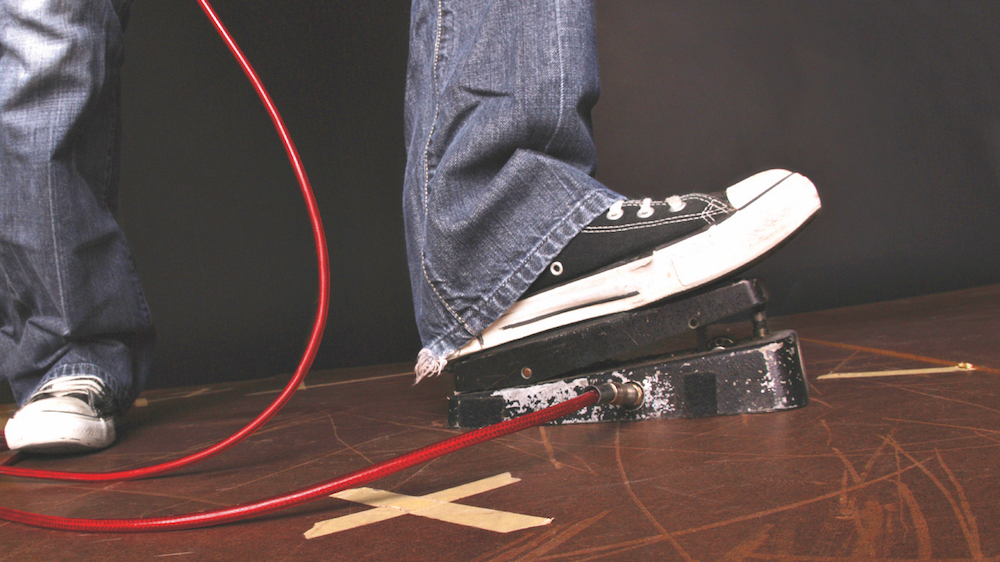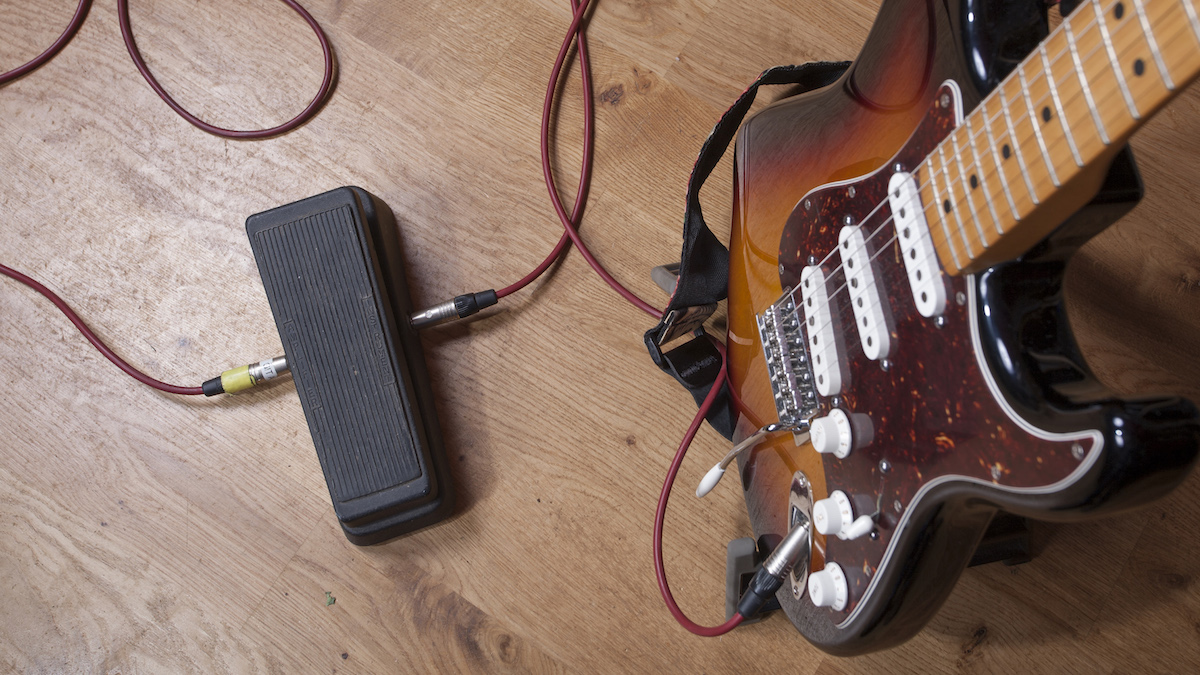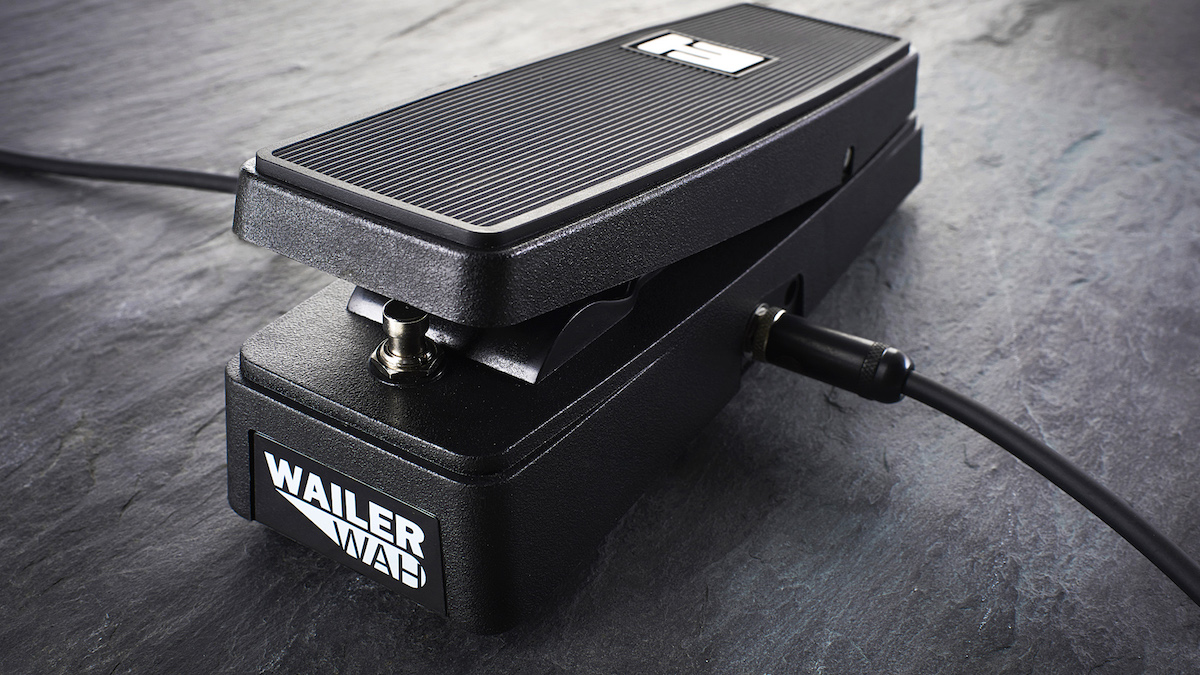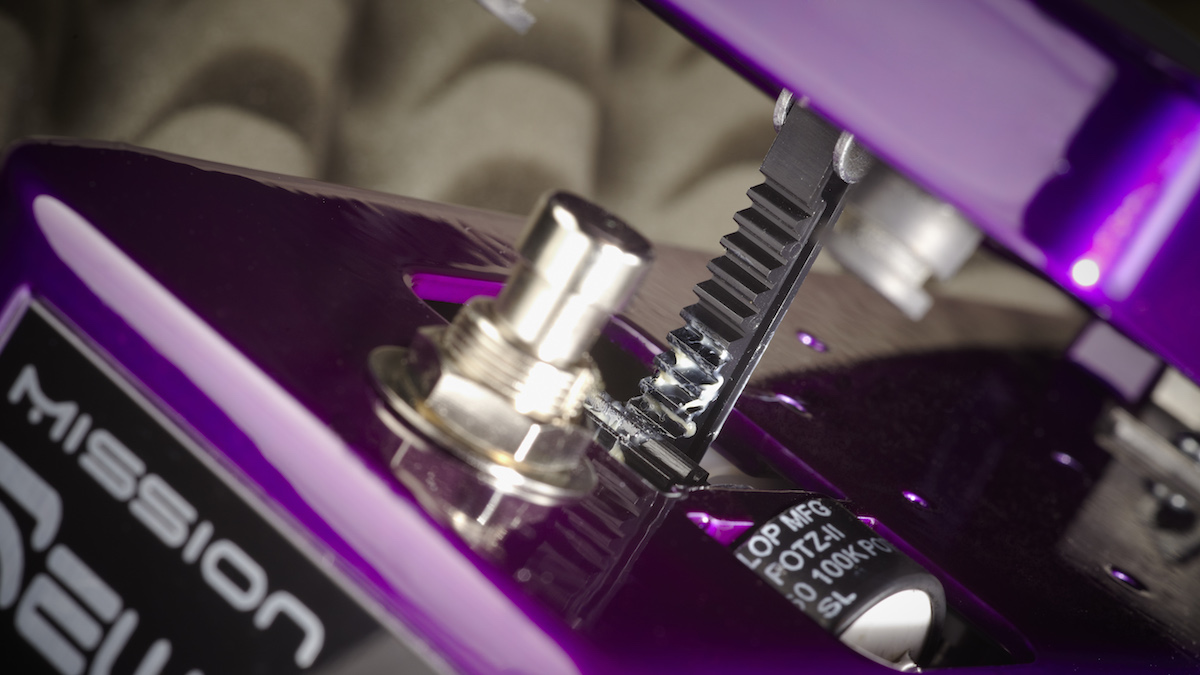6 creative ways to use a wah pedal
Want to get more from your wah-wah? Here are 6 techniques to help you sound like Satch, Kirk Hammett, Matt Bellamy and more...

When you think of a wah, the first thing that might spring to mind is a slow blues solo with the pedal used to give the notes a 'vocal' feel; one of the most common reasons people go in search of the best wah pedals. Then again, it might be the explosive histrionics of Kirk Hammett, using it to accent a blizzard of notes, or Joe Satriani smoothly articulating his lead parts on Surfing with the Alien. Or, perhaps it’s Matt Bellamy using it to thin out a guitar intro before the bass drops (a production trick commonly used in dance music). These are just some examples of creative ways to use a wah pedal, but there are plenty more to experiment with.
Some of us may think that the humble wah pedal is underestimated and underused. In this article we're going to show you some creative ways to get more mileage out of one. First though, you need to get your hands on a wah. Two of the most popular options are the Dunlop Cry Baby Wah, a bright, aggressive wah, and the Vox Wah, which has a smoother but still bright sweep. There's also the darker, thicker Morley Bad Horsie, favored by players like Steve Vai.
Creative ways to use a wah pedal: What you’ll need
One thing to be aware of is that while most electric guitar wahs are bandpass filters, some bass wahs are set up as low-pass filters. Why? So they preserve bass frequencies wherever they are set.
The tricks we're describing here will work on electric and bass guitar wah pedals. We're using a stock Dunlop Cry Baby Wah, although we have to confess that live we usually use a Boss PW-10 modelling wah on either the Vox or synth setting.
Although they're voiced differently, all of these tricks will work on the Cry Baby, Morley and Vox. Depending on the model of Morley, you may need to boost the treble on the input a bit. Ready to start? Then let’s take a look at these 6 creative ways to use a wah pedal.

1. Toe Down
With the toe down, the wah pedal effectively becomes a high-pass filter. Of course, it's actually bandpass, but the attenuation of frequencies below its maximum bandpass frequency point will be more noticeable than the attenuation of the much higher frequencies above that point.
In other words, it will sound like a high-pass filter, even if that's not technically what it is. This can be very useful for breakdowns or intros, particularly in heavier music. You can make this more or less extreme with your choice of accompanying pedals, and if you stick one of the best fuzz pedals in front of the wah, it can sound very biting.
Get The Pick Newsletter
All the latest guitar news, interviews, lessons, reviews, deals and more, direct to your inbox!
There’s a version of Smashing Pumpkins' Slunk filmed on a Japanese TV show, and included on the Vieuphoria DVD, where Billy Corgan uses this trick on the middle eight. You can also hear it on the intro to Dead Star by Muse, where Matt Bellamy uses a wah to thin and fry the guitar to almost nothing before the band enters and the song properly kicks in.
In the following audio clip, we're using an Op-amp Big Muff in front of the Cry Baby. The drop in our riff isn't particularly dramatic, but it should give you an idea of how you could make it so.
2. Heel down
This is more unusual, and there are very few tracks where a guitarist uses the heel down for more than a short passage, but leaving the pedal in this setting removes much of the treble content and emphasises certain lower-mid resonances. It can sound creepy or as though it’s being played underwater, especially when slight movements are made to bring treble back in momentarily.
The intro for Boot Camp by Soundgarden, featured on the album Down on the Upside, is an example of this, where the clean guitars are dark and menacing, and not just because of the notes played, but the timbre of the resonant filters too. An example of this used for a lead sound would be the leads in the verses of Soundgarden’s Pretty Noose from the same album.
Our audio clip has the Dunlop Cry Baby Wah in front of a Hamstead Odyssey, helping to make the riff dark yet still attention-grabbing.

3. Variable Filter
Using a wah pedal as a variable filter is an unusual trick, but an easy one. However it generally does require you to write the part with the effects so that it makes sense.
By sequencing the speed that you sweep the wah with a chord progression so that it's moving very gradually – here we're thinking that it would complete a sweep in four, six, or eight bars – you can use the wah a little like a manual phaser, giving movement to the guitar.
It's a great trick for a middle eight or a build-up, and it's very underused. We couldn't think of many examples of this, so we used a riff from a song from our old band where this is used. The chain is Cry Baby into a Boss DD-6 and a Strymon El Capistan.
4. Parked wah
Everybody knows this trick, even if they don't use it. If nowhere else, you've heard it on Dire Straits' massive hit Money For Nothing. It comes from moving the wah pedal to a point where a particular resonance – usually in the midrange – really works with a given riff, then leaving or 'parking' the pedal there.
Because most wahs, not least the most popular ones, are activated in either the toe or heel down position, it makes this trick hard to do precisely in any situation other than the studio.
Electro-Harmonix made a specific pedal, the EHX Cock Fight (referencing the other name for this trick, 'cocking' a wah), to achieve this sound. If this is a sound you're likely to want on demand, and you can afford to buy a dedicated wah pedal to do it, then the EHX Cock Fight is a good way to go.
In our audio clip for this section, you'll again hear the Cry Baby played into the Odyssey. We've added the El Capistan onto the end to provide some space to this expansive, Opeth-like chord progression.

5. Pull focus
For something like an outro, a great and creative way to use a wah pedal is to 'pull the focus' of the guitar by using the wah to back off the treble. We like to bring the wah from toe down to heel down gradually, before resetting it to toe down suddenly, usually at the beginning of a chord progression.
Ideally though, you can time it so that your track or section comes to an end either just as the wah hits heel down, or shortly after.
In this audio clip you'll hear the Cry Baby into the Strymon El Capistan. The only drawback of the Cry Baby is that its first inch or so of travel is usually a bit 'sticky' when compared to the PW-10 or a Morley, and this took very careful movement of our foot.
6. Synth wah
Some modelling wahs might have a 'synth' setting (the PW-10 certainly does). What it's likely to be is a variable filter with square-wave distortion, and possibly a blend of the octave above and below.
As you may have spotted, this is easy to approximate with a Big Muff, set with sustain on full and an octave pedal into a wah. To create the most extreme sound possible, it’s important that they go before the wah. It's this kind of sound that Benjamin Curtis was conjuring on First Wave Intact, the opening salvo from Secret Machines.
Although not a trick per se, this is a rethinking of the extreme end of what a wah pedal can be. And if you want to emulate it, you'll need to purchase a particular wah accordingly.
Alex Lynham is a gear obsessive who's been collecting and building modern and vintage equipment since he got his first Saturday job. Besides reviewing countless pedals for Total Guitar, he's written guides on how to build your first pedal, how to build a tube amp from a kit, and briefly went viral when he released a glitch delay pedal, the Atom Smasher.
“The original Jordan Boss Tone was probably used by four out of five garage bands in the late ’60s”: Unpacking the gnarly magic of the Jordan Boss Tone – an actual guitar plug-in that delivers Dan Auerbach-approved fuzz
“This is a powerhouse of a stompbox that manages to keep things simple while offering endless inspiration”: Strymon EC-1 Single Head dTape Echo pedal review










